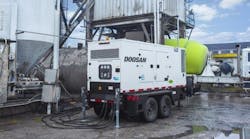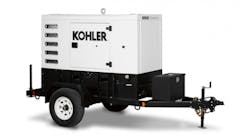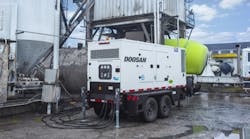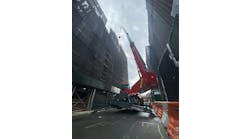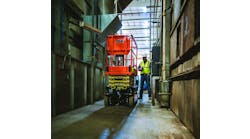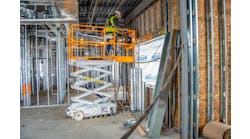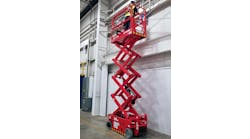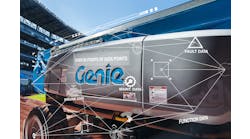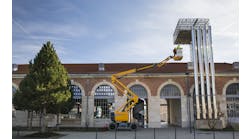RER interviews Todd Howe, global generator products manager, Doosan Portable Power, about the importance of telematics, fuel economy and noise level improvements, the growth of the global power-generation rental market and increased rental penetration in the generator space.
RER: What is new in generator technology – both for your company and, in your opinion, in the generator industry as a whole?
Howe: We’ve gone from Tier 3 to 4 interim and now from 4 interim to 4 Final. Along the way, we’ve done what we can to address customer need and innovate a little bit on some features and benefits as a result of that work. But I’ve got to say and I think most manufacturers that we’re in the market with would agree that it’s been very regulation-focused over the last few years. But as we look into the future we see a whole lot of pent-up opportunities for us to go back and revisit customer requirement and coming up with the next set of trends and specifications that will start driving the industry in the future.
Probably the biggest thing that’s going to come along here in the near term is very widespread adoption of remote telematics as the machines get more complex. Uptime of course has always been a premium, but the new complexity that’s coming along with these units is something that fleet operators are going to want to start monitoring a lot more closely and in the quest to be a preferred supplier, everybody wants to make sure that they are very proactively addressing that rental customer as opposed to being reactive to phone calls when things go wrong. So the ability to monitor and ultimately predict a machine that’s going to need some attention ahead of it actually having a failure is going to be where that frontier takes us over the next couple of years.
How have generators in general improved their performance, capability and functionality in recent years and what are some of the improvements you expect to see in the future?
There have been some improvements that are probably not as well publicized as the overall impact Tier 4 has had. Tier 4 has had a fair bit of negative PR associated with it because of its cost and complexity, but there are some benefits to it. We’re seeing certain applications and power nodes, we’re seeing a bit of a fuel economy improvement because of the improved characteristics of engine efficiency and engine fuel injection. And as we went through the development, we looked at the key things that customers are always asking us for. Certainly noise level on generators is a very strong customer concern and an attribute we try to manage so as we went through the evolution of basically re-designing packages from the ground up for Tier 4 we made sure that lower noise was in our plan and we were able to achieve that with some fairly innovative technology.
Larger units for instance I’d say at least in our portfolio everything 150 kW up to 250 kW has a dual-compartment enclosure system right now, which is a fairly innovative solution, I don’t know of anybody else out there doing what we’re doing. We separate the engine compartment from the cooling system with a baffle wall between them. On traditional machines with single compartments, the air came in the back of the machine and pulled cold air across the engine and then was pushed through the radiator and then went out through the roof. The way we’re doing this now is separating the air flows in those two compartments. So we keep the engine room cool with a couple of small electric-driven variable-speed fans. The only purpose they serve is to remove conventional heat from the engine compartment and keep that compartment at an optimum temperature.
And on the other side of the baffle wall, we have a centrifugal style fan that’s driven off the shaft from the front of the engine. That gets cold ambient air into our radiators and it’s very high-flow air. It pulls it in from the front of the package and pushes it out through the roof.
The power generation rental market has been growing quite a bit, in the U.S. and globally. From your perspective, what are the factors that are driving this growth?
Several. Every time it seems we come through a major economic event in our market -- I think the first time I saw it when I was coming into the industry was the Asian crisis when there was a fairly significant recession -- the outcome of that recession was a shifting of the large contractors away from owning equipment and more towards renting equipment. That was about the same time we started to see the rise of large rental companies. Then fast-forward 10 years and we come through the great recession of 2008 and 2009, that trend replicated again where we saw a lot of contractors that were traditionally owning equipment starting to de-fleet during that time in reaction to a reduced volume of work. When they came back out of the recession and the work started to return, those contractors continued to opt towards more increased rental penetration than they had previously.
Some of that had to do with a bit of risk aversion around the economic sensitivity and the economic confidence in the amount of work they have in front of them but I also think it has to do with the complexity of the product. As the product goes through the emission tier, it becomes more expensive to own, operate and maintain. They’d rather outsource that to somebody else and just pay for the output of the machine they’re using. So whether it’s electric power or compressed air or whatever they need, they’d rather buy that as a utility as opposed to owning a hard asset around it.
For rental companies that are much involved in power-generation rental, what are some key tips that you can suggest to them about effectively serving this market?
It depends on the sector you’re in of course but we’re seeing a lot of work going on in oil and gas markets right now, that’s one of the healthier sectors that’s happening and that’s a really important application, it’s a 24/7 market. So the service you bring is extremely important there, the majority of value is tied up in the company’s capability almost more so than the equipment provider that they’ve selected. As long as they’ve selected a good reliable partner for equipment, then it comes down to the services they’re providing. Are they 24/7 capable, how many technicians do they have on the road every day, are they bringing fuel as part of the equation, do they have ancillary equipment to offer like transfer switch gear and things of that nature? Are they connected with telemetry so that they are able to monitor the machines in the field? Those are the questions that a savvy end user in a super critical application is starting to ask a lot more questions around.
